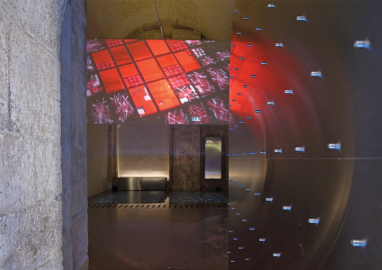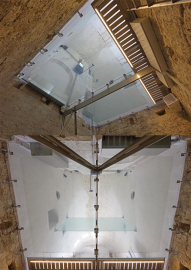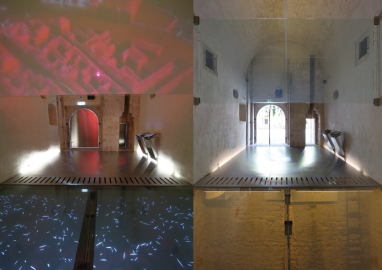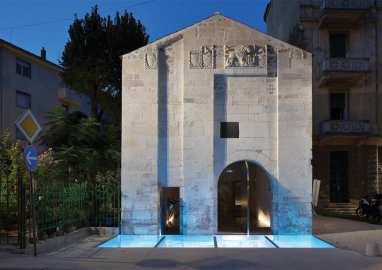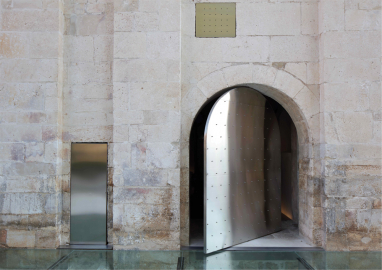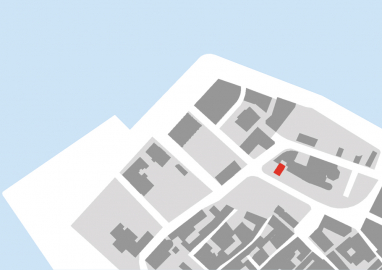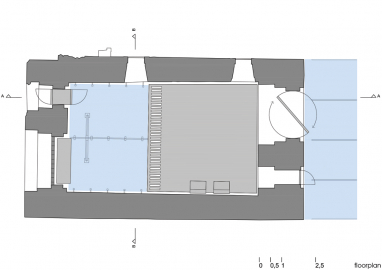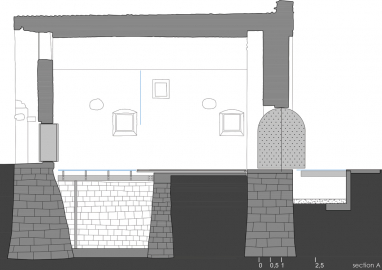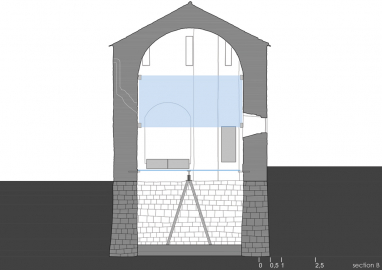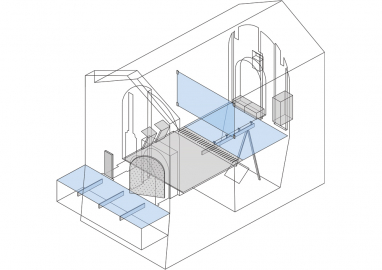Mali Arsenal, HERA Visitor Center
Conservation requirements prescribed minimal architectural intervention, therefore multimedia was introduced as an equal spatial element. The interior space has two modes of appearance: the one where multimedia is present and the space is dematerialized and invisible, and the one where the space is visible with all the preserved historical layers.
The Small Arsenal is part of Zadar's medieval fortress Kaštel, a separate fortification structure embedded in the system of city walls, which served as the defense's last refuge as well as for internal control of the rebellious city. The complex underwent numerous transformations and only a few of its parts have been preserved, including the lower part of the entrance tower, later converted to a gunpowder magazine – the so-called Small Arsenal. This house-room is converted into a multimedia exhibition center, a highly technical autonomous space and a starting point of a heritage trail exploring the city's fortification system. The aim of architectural activity is not to create a new form, but to continue the existing one, not only by building and adding new elements, but also by reducing – by opening up the buried historical gaps, designing the program, and introducing new media.
The interventions attempted to affirm all the preserved layers of history. The inner and outer canals were unearthed and the walled in side door opened. Reanimated layers were actively integrated into a single entity together with the virtual one. The new layer was added carefully, virtually without touching the monument's fabric, using modern materials and techniques. By entering the Small Arsenal, visitors activate the projections and find themselves in a dark, dematerialized space whose original floor was partially replaced by a steel platform on the same level, a deck for observing the 3D visualization of the morphogenesis of the city walls throughout history.
The animation is projected on glass vertically positioned over the ending of the steel platform, which is continued by an interactive floor projection over a glass floor that reveals the depth of the room in the interior. But the projection makes the glass opaque; movements on the floor activate a sensor which follows them with a visualization of playful lines. Once the projection is over the light goes on and the visitors find themselves in the authentic space, with the presence of the new maximally reduced.
Stainless steel is the main constructive and forming material – a resistant, reflective "colorless" material that doesn’t require a protective coat and is representative of the present day. The material was used for the closures on the restored facade (which reflect the environment and whose design subtly references the presumed appearance of the original closures), as a floor coating and for vertical and horizontal glass surface girders. Two stainless steel girders extending from the wall carry the screens with interactive applications detailing the city walls. They also serve to conceal even the smallest traces of the contemporary present such as sockets and switches in order to maximally simplify the contrast between the physical and the virtual both in the positive and the negative version of the room.
As a visitor center, the Small Arsenal is designed to function independently, without guards or museum staff, and with a projection that is launched by interaction with visitors.

